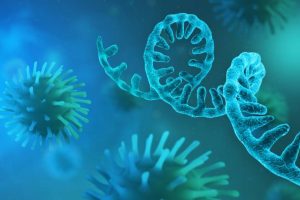
The following was originally published in The Hub.
Viruses are experts at infiltrating the body, as the SARS-CoV-2 virus (and resulting COVID-19 pandemic) have amply demonstrated. But their efficiency in targeting specific and isolated cells also make them useful drug delivery vehicles, known as viral vectors.
Viral vectors are modified viruses that can act as couriers to transport therapeutic “packages” to specific diseased cells. These packages contain instructions with modified or designed DNA or RNA to correct or supplement a faulty or missing gene. For instance, the Johnson & Johnson COVID-19 vaccine uses viral vectors to transport modified genetic material from the SARS-CoV-2 virus to cells, generating an immune response.
Though viral vector-based gene therapies are among the most advanced treatments for many congenital and acquired diseases, producing them is complex and costly.
“One of the major challenges in viral vector gene therapy is how to improve the quality, purity, and cost of the manufactured viral vectors, so that we can use the smallest possible effective dose, reduce immune side effects, and lower the cost of treatments,” said Hai-Quan Mao, associate director and core faculty member of the Institute for NanoBioTechnology. He is also a professor in the departments of Materials Science and Engineering and Biomedical Engineering and a core faculty member at the Translational Tissue Engineering Center.
To address this challenge, Mao and his team are teaming up with Nolan Sutherland, senior scientist at bluebird bio, a Cambridge, Massachusetts-based biotechnology company that develops gene therapies. The partnership started about two years ago when Yizong Hu, a biomedical engineering Ph.D. student under the mentorship of Mao, was at an annual meeting for the American Society for Gene and Cell Therapy presenting his research on a new particle assembly technology. Sutherland heard the presentation and approached Hu to discuss the technology and its application to the production of lentiviral vectors, which are made from a family of viruses that infect people by reverse transcription of their RNA into DNA in their host cells’ genome.
Sutherland thought that the Mao team’s approach might help streamline transfection, a key step in producing viral vectors. During transfection, a polymer solution is combined with a mixture of DNA plasmids to form transfection particles, a cumbersome procedure involving complicated solution blending and strictly timed dosing.
Mao, Hu, and Yining Zhu, also a biomedical engineering PhD student, developed a more effective and shelf-stable formulation of DNA particles in a ready-to-dose form. They also discovered that size-controlled sub-micron particles are most effective in transfecting cells and producing viral vectors. This production method is based on the team’s years of experience in controlling transfection vehicle characteristics to enhance performances and stability.
The team members validated their findings with Sutherland at bluebird bio using that company’s bioreactor. They compared the new method with the industry standard, and the results showed improved vector production yield, shelf stability, handling stability, and quality control of the transfection process.
“With the drastic increase in demand for lentiviral vector-based cell therapy products … this new technology will greatly improve the production quality, consistency, and yield of our therapeutic LVVs,” Sutherland said.
The team reported its findings in Nano Letters and is scaling up production with an eye to transferring the technology to the marketplace.
The technology is available for licensing through Johns Hopkins Technology Ventures.
“This work represents a great example how we can partner with corporate collaborators to accelerate the translation of discoveries on the bench to the industry. This type of collaboration with industry provides us opportunities to identify the technical gaps in the engineering solutions that we develop, and fine tune them to better address the real-world problems in a more targeted fashion,” Mao said.
According to Sutherland, the partnership with Mao and his team has “allowed bluebird to pursue high risk/reward innovation in a space outside of its core expertise. The team has a keen eye for application to industry which has made the partnership incredibly productive.”
Team members say that this new particle engineering technology will find a wide range of applications in the manufacture of a variety of viral vectors for gene and cell therapy applications.
Also contributing to the project are Jordan Green, professor in the Department of Biomedical Engineering and associate member at the INBT, and Sashank Reddy, assistant professor of plastic and reconstructive surgery at Johns Hopkins Medicine, medical director at JHTV and affiliate faculty member at the INBT.